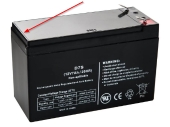












These batteries require no maintenance. Enjoy "out there in Maine" !Galen Young wrote:Contact the manufacturer ask they for the proper maintenance of your batteries.
 1
1













Troy Rhodes wrote:In your first post, you ask if you should add water to your batteries, and then in your next post you say they are maintenance free...it can't be both.
Note that AGM batteries do not normally have any liquid electrolyte, and adding water would almost never be a good idea.
I think you got good advice to contact the manufacturer.
Good luck, and I would like to know what you find out.
How far do you normally discharge your battery bank? - only once to 11,8 in 5 years
How was/is the battery bank monitored for depth of discharge? - no monitoring: the inverters never cut-out due to deep discharge until the said batt. went dead.
Thanks in advance,
troy








 1
1












hasan mohammadi wrote:I would appreciate anyone help me about following question: what is difference between agm separator for different application such as : solar, Ev, ups, motorcycle and start-stop?
My opinions are barely worth the paper they are written on here, but hopefully they can spark some new ideas, or at least a different train of thought

|
Arthur, where are your pants? Check under this tiny ad.
The new kickstarter is now live!
https://www.kickstarter.com/projects/paulwheaton/garden-cards
|




